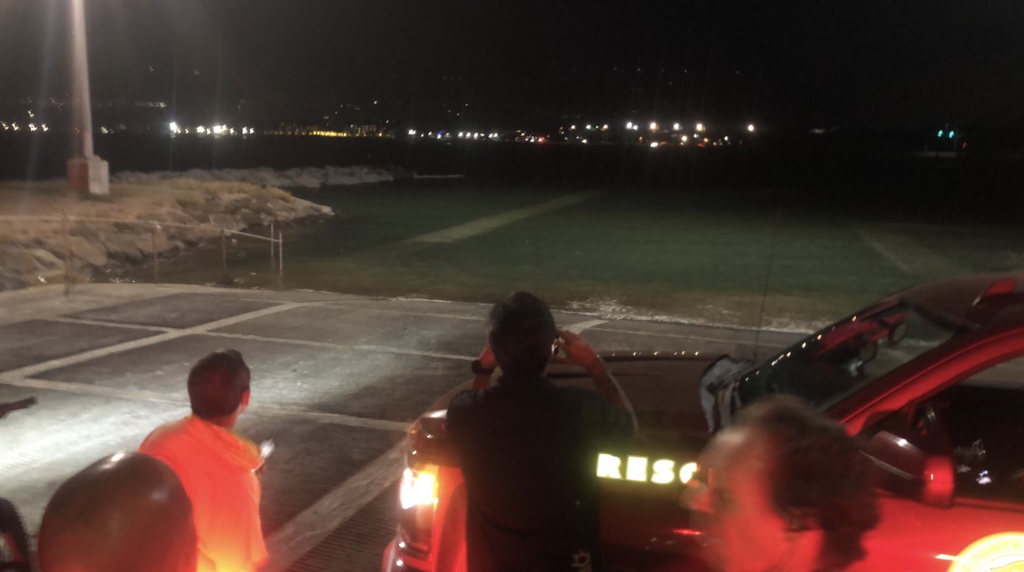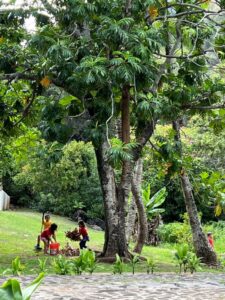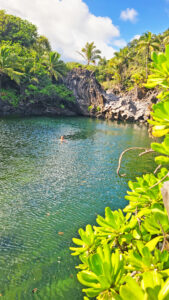No significant damage or injuries reported on Maui from tsunami

People view a 15 foot drop in water levels as tsunami waves arrive in Maui. No damage to life or property was reported as the tsunami warning was lifted Wednesday morning. Photo courtesy Maui County
A massive 8.8 magnitude earthquake off Russia’s far eastern coast sent tsunami waves into Japan, Hawaii and the West Coast on Tuesday.
The earthquake hit near Russia’s Kamchatka Peninsula at about 11:25 a.m. Wednesday local time, according to the U.S. Geological Survey. It is believed to be one of the most powerful ever recorded and the strongest in 14 years.
Maui residents spent an anxious day in anticipation of a potential tsunami. Sirens were blaring, grocery stores were busy, some businesses closed early and traffic was gridlocked as many people sought refuge in shelters or waited by their cars at higher elevations.
Throughout the day Tuesday, Maui County Mayor Richard Bissen urged caution.
According to both state and county officials, there were no significant incidents, injuries or property damage reported.
The National Weather Service downgraded the tsunami warning to an advisory at about 11 p.m. Tuesday, and the Hawaiʻi Emergency Management Agency announced that the tsunami threat had been officially lifted Wednesday morning.
Residents were advised to continue to monitor ocean conditions and be alert to any changes or hazards including strong currents.
The Maui Emergency Management Agency went into full activation, and county preparedness events began shortly after 2:45 p.m. Tuesday, when the National Weather Service issued a tsunami warning for Hawaii with waves expected to hit Kaua’i’s north shore first at around 7:10 p.m. and reach Maui County by 7:17 p.m.
A warning means that a tsunami has been generated and could cause damage along the coast, and that urgent action should be taken to protect lives and property.
Tsunamis are waves triggered by earthquakes, underwater volcanic eruptions and submarine landslides. After an underwater earthquake, the seafloor rises and drops, which lifts water up and down. The energy from this transfers to waves,” according to reporting from the Associated Press.
Warnings were issued for the entire West Coast of the U.S and Canada northward to the Aleutian Islands.
Many people think of tsunamis as one wave, but they are typically a series of waves that rush ashore like a fast-rising tide. The NWS also warned that the first waves in a tsunami are not always the biggest.
“Tsunamis cross the ocean at hundreds of miles an hour — as fast as a jet airplane — in deep water,” said Dave Snider, tsunami warning coordinator with the National Tsunami Warning Center in Alaska. “But when they get close to the shore, they slow down and start to pile up.”
Snider said it could take minutes for waves to hit land next to the site of a major quake. It could take hours for tsunamis to cross the Pacific Ocean. The speed of tsunami waves also depends on ocean depth. They travel faster over deep water and slow down in shallow water.
People were urged to stay away from coastlines until any wave surges passed in places as far away as Fiji, Samoa, Tonga, Federated States of Micronesia and Solomon Islands.
Locally, at 3:22 p.m., Maui officials ordered evacuations for all individuals in coastal areas to move inland and to high ground immediately. Information was provided to tsunami evacuation zones.
Siren alerts went off across the state at 5:10 p.m., 6:10 p.m. and 6:40 p.m. in anticipation of the first waves. The county informed the public at approximately 5:20 p.m. that water valves would be shut off in low-lying areas in a preemptive effort to avoid damage. The county also shut down several wastewater pump stations and facilities in Lahaina, Kihei and Central Maui to prevent damage amid the tsunami warning.
Traffic was a major issue as many sought higher ground. Evacuees lined the sides of the road on Halekala Highway and Omaopio Road seeking refuge and a view of the ocean to witness the potential tsunami.
According to several motorists, the trip from Central Maui to Kula took as long as three hours on Tuesday. The county opened Cane Haul Road toward Hansen and Pulehu roads to traffic heading to Kula. Oprah’s road was opened for Upcountry access, according to the Maui Police Department.
All access points to Kahului Beach Road were closed by Maui police by 6:40 p.m. including at Wahine Pio, Kaahumanu Avenue and Kanaloa Avenue.
Initial wave impacts from the leading edge of the tsunami measured several feet at some monitoring stations. The county advised people not to return to evacuated areas until the tsunami warning was officially lifted and an all-clear was given.
The tsunami warning was downgraded to a tsunami advisory by the Pacific Tsunami Warning Center at 10:38 p.m. Tuesday. The shelters that had opened closed after that.
Sea level changes and strong currents may still be occurring along all coasts, posing a hazard to swimmers and boaters. The public is being advised to stay away from coastal areas and out of nearshore waters.
On Wednesday, the county reported that activities and traffic were back to normal.
There was no reported tsunami damage to Lahaina, Kihei, Kahului or the Molokai wastewater and pump stations. Debris near Wailuku pump station was monitored, but didn’t reach the station.
In Lahaina, Napili 3 pump station is being repaired after a mechanical failure. A portable pump is in place to maintain wastewater services during this time. For information, call the Wastewater Division at (808) 270-7417.
While there was little damage from the tsunami, there was a 15-foot water drop at Kahului Harbor as water receded Tuesday night due to the tsunami and exposed the pier. Kahului had the highest amplitude wave values in Hawaiʻi of 5.7 feet, which is the height of the wave, relative to normal sea level.





